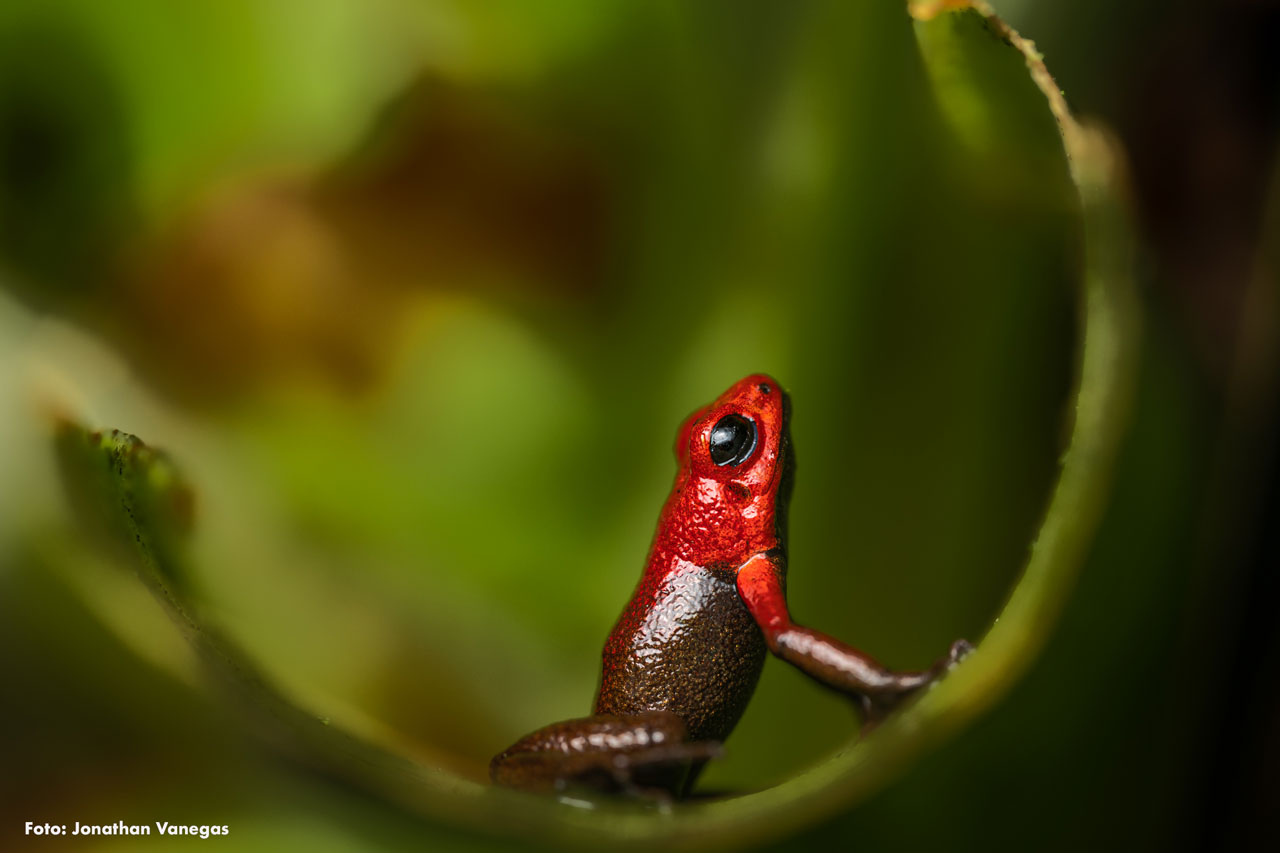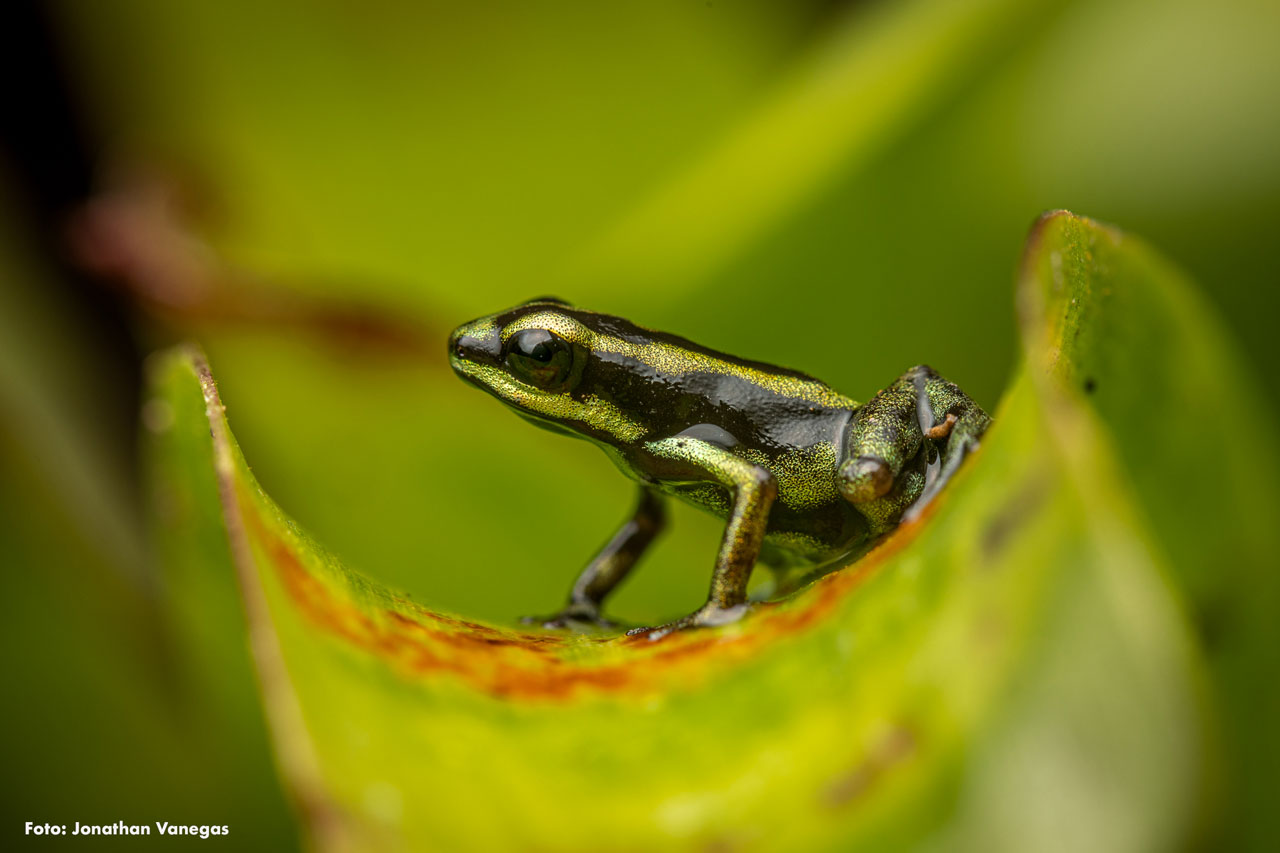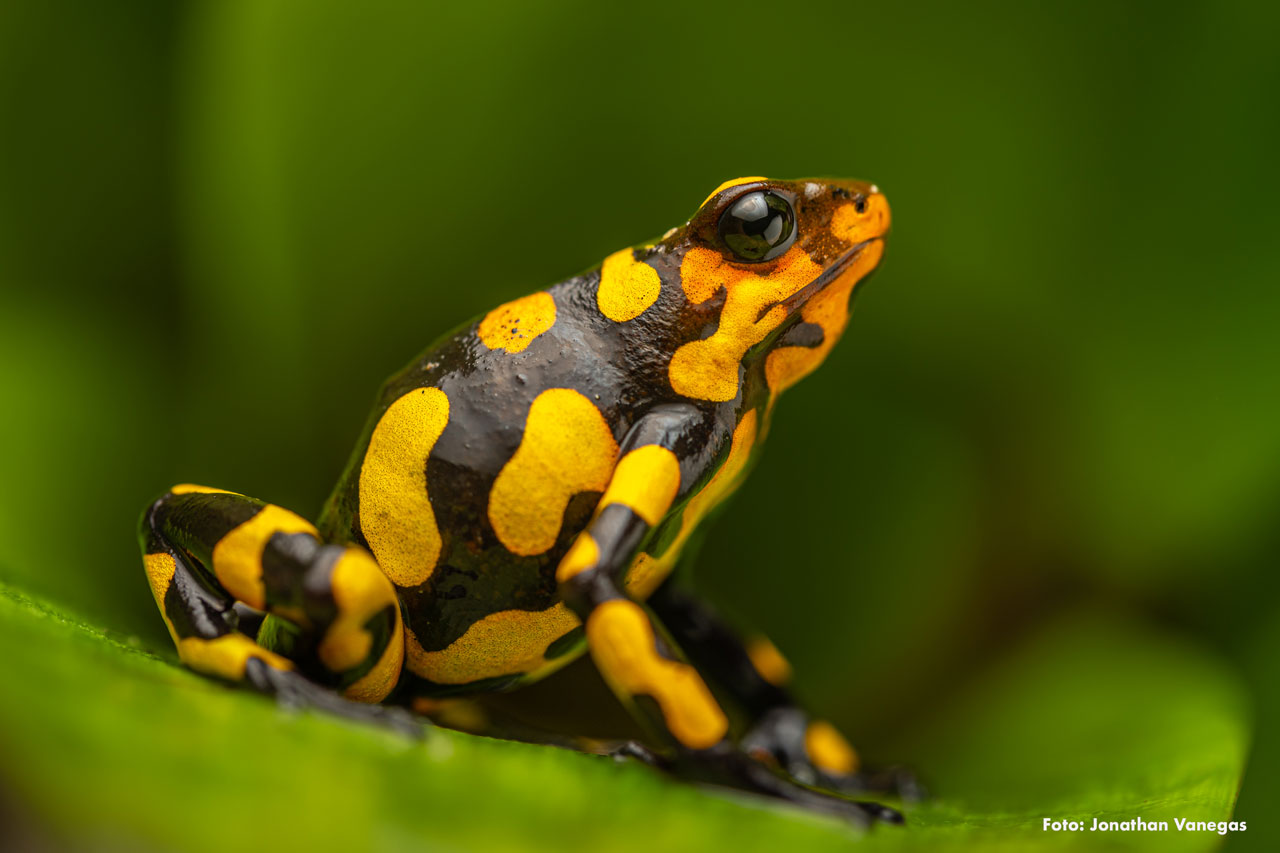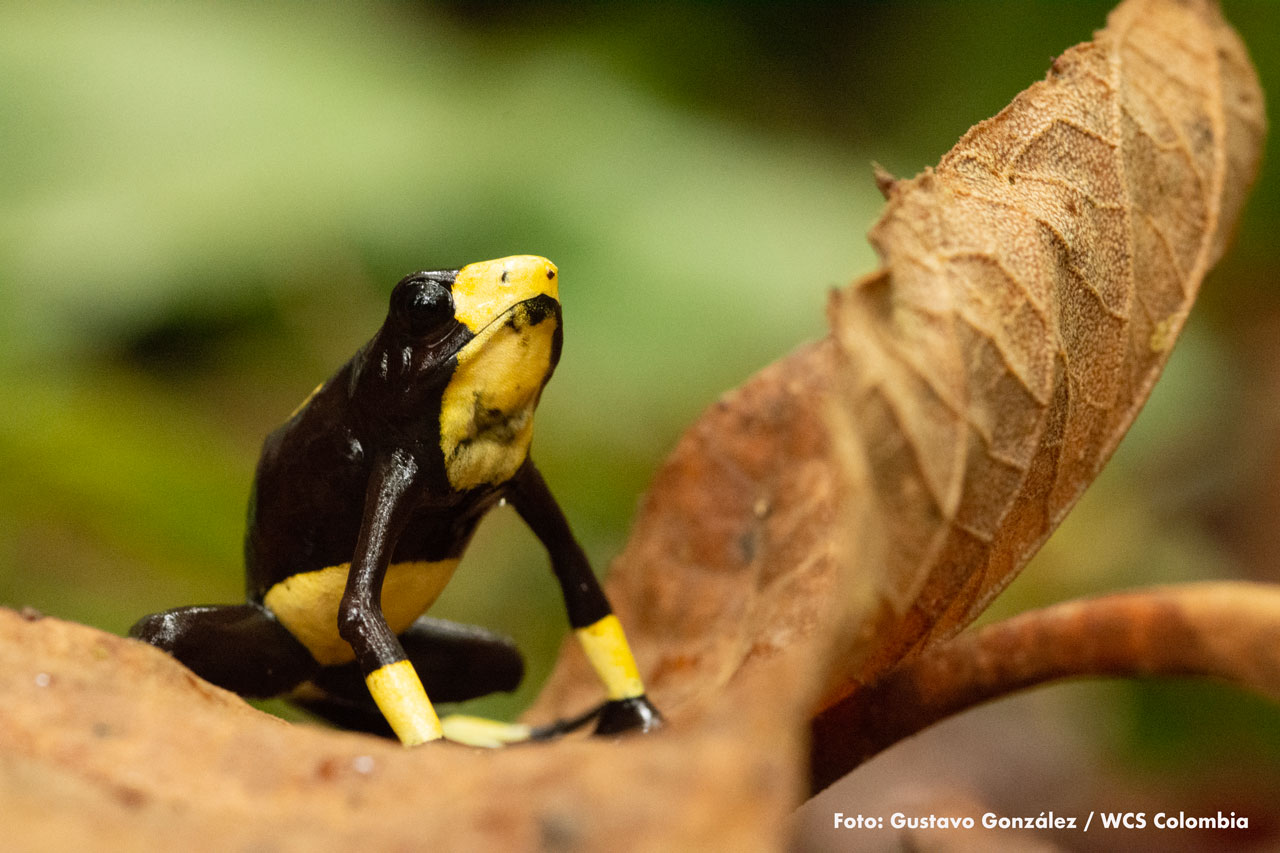 Bolitoglossa tatamae
Bolitoglossa tatamae
This is a salamander species endemic to Colombia. It was discovered in 2006 in the cloud forest of the Western Cordillera within Tatamá National Natural Park. It is characterized by its smooth, soft skin that is gray or dark brown on the underside of its body and tail. It is known for its restricted habitat and limited geographic distribution, which makes it vulnerable to the loss of its natural habitat due to deforestation and urbanization. It is considered an endangered species (EN) by the International Union for Conservation of Nature (IUCN) because of its small population and limited geographic range. Therefore, conservation efforts are crucial to protect its habitat and prevent its extinction.
 Andinobates daleswansoni
Andinobates daleswansoni
This is a species of toxic frog that inhabits the Selva de Florencia National Park in the department of Caldas, Colombia. This frog measures approximately 1.5 cm and displays red and brown coloration. It is an endemic species to Colombia and is classified as endangered (EN) due to habitat loss and pollution. Andinobates daleswansoni is important for scientific research, as its venom contains a variety of alkaloids that can be used in medicine and biotechnology. Additionally, studying this species can help understand the evolution of toxic frogs in the Andean region of Colombia.
 Andinobates fulguritus
Andinobates fulguritus
Also known as the "Andean green poison frog," this amphibian species is found in Colombia and Panama, inhabiting the humid forests of the Western Andes and the Pacific region. This poison frog is very striking, with a distinctive coloration pattern of bright yellow or green spots and stripes on a black background. The toxin of this species is an alkaloid that could potentially be used in medicine, although further research is still needed. This species holds great ecological importance as it helps control insect populations in its natural habitat and serves as an indicator of ecosystem health where it resides.
 Agalychnis spurrelli
Agalychnis spurrelli
Known as Spurrell’s monkey frog, this is an arboreal frog species found in Central America, specifically in Panama and Colombia. It is characterized by its bright green color with white spots on its back and reddish eyes. It is capable of jumping long distances between trees thanks to its strong hind legs and its ability to adhere to the surfaces of leaves and branches. Although Spurrell’s monkey frog is not currently endangered, its habitat is threatened by deforestation and the degradation of the cloud forest where it lives. This species is found in the Farallones de Cali National Natural Park.
 Oophaga anchicayensis
Oophaga anchicayensis
Commonly known as the Anchicayá poison dart frog, this toxic dart frog species is found in Colombia, specifically in the Western Andes in the Anchicayá region within the Farallones de Cali National Natural Park. It is characterized by its colorful pattern of bright yellow with black spots. Like other dart frog species, it produces and stores toxins in its skin to protect itself from predators. The Anchicayá dart frog is considered an endangered species (EN) due to habitat loss and the degradation of the cloud forest where it lives.
 Oophaga lehmanni
Oophaga lehmanni
Its common name is Lehmann's dart frog. It is a species of toxic dart frog that inhabits, specifically, in the region of the Farallones de Cali National Natural Park. It is characterized by its colorful pattern of bright red with black bands. Lehmann’s dart frog is critically endangered due to habitat loss, degradation of the cloud forest, and capture for the illegal pet trade. Parques Nacionales Naturales de Colombia, Cali Zoo, CVC, WCS Colombia, and other local organizations work toward the conservation of this species.
 Oophaga histrionica
Oophaga histrionica
The Cocoi dart frog is an amphibian species belonging to the family Dendrobatidae. This frog can only be found in the mountainous regions of the Risaralda department. A notable characteristic is its striking coloration, which can be red, orange, or yellow. The Cocoi dart frog is critically endangered due to habitat loss, degradation of the cloud forest, and capture for the illegal pet trade. Parques Nacionales Naturales de Colombia, Carder, WCS Colombia, and other local organizations work toward the conservation of this species.
 Cecilia
Cecilia
Caecilians (Caecilia sp.) are a group of amphibians found in Central and South America. These animals resemble snakes, but unlike them, caecilians have no external limbs and possess a cylindrical, elongated body. They are little known and studied animals, but it is understood that they play an important role in the ecological balance of the forest. Many species of caecilians are threatened due to habitat degradation, pollution, and climate change. Deforestation directly affects their natural habitat and limits their chances of survival. Additionally, soil and water pollution negatively impact the health and reproduction of this species.
Traslated with AI support